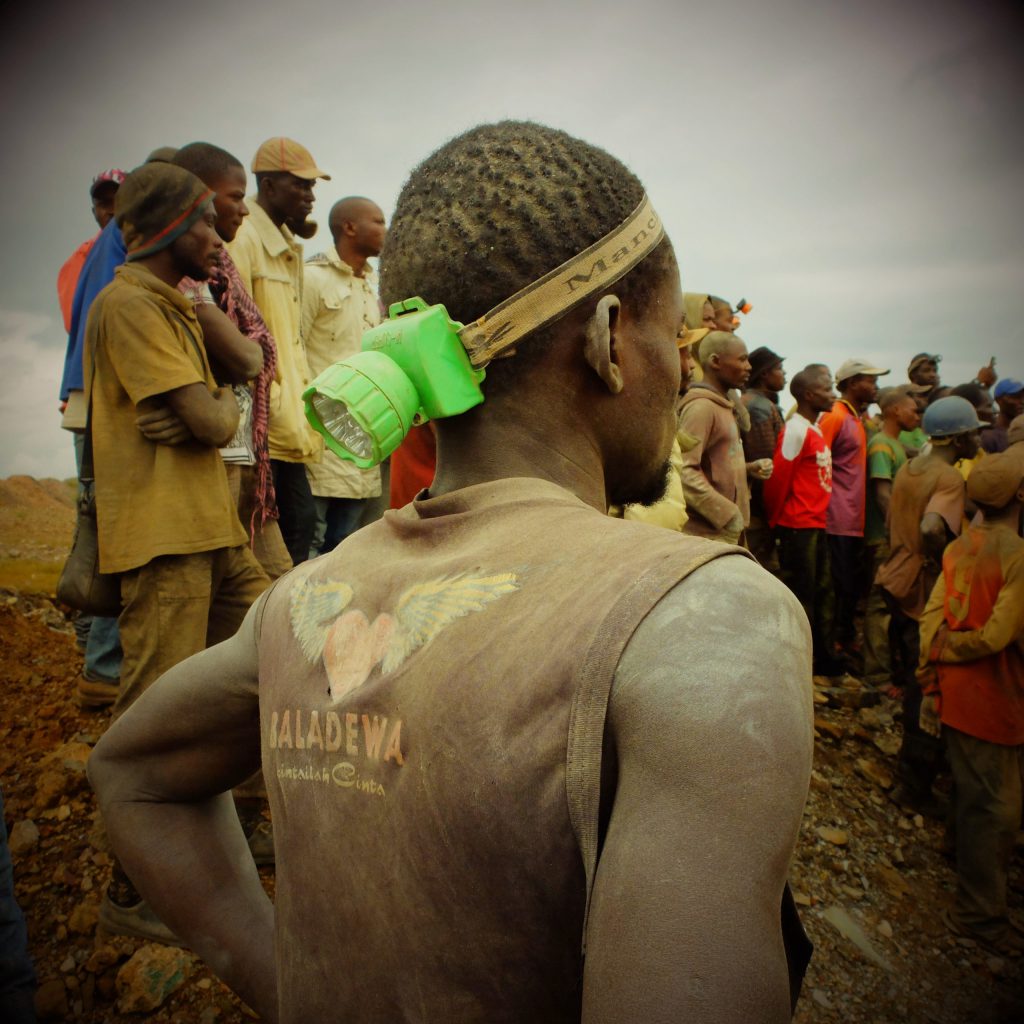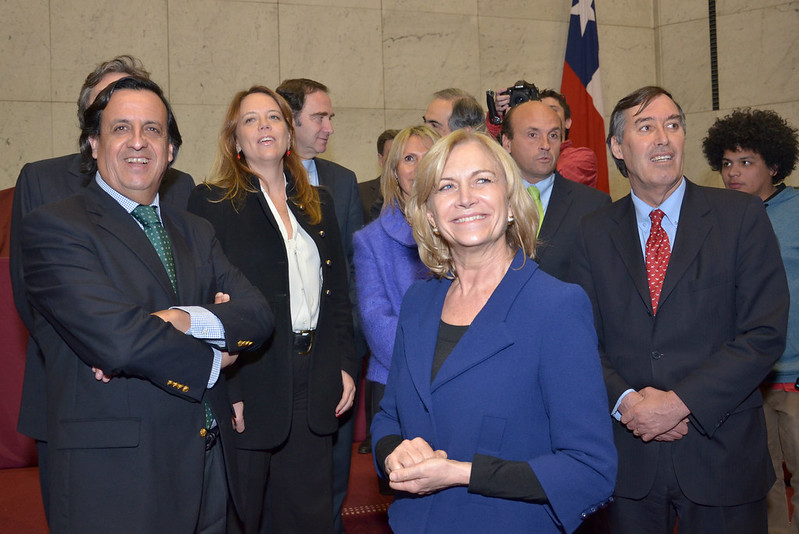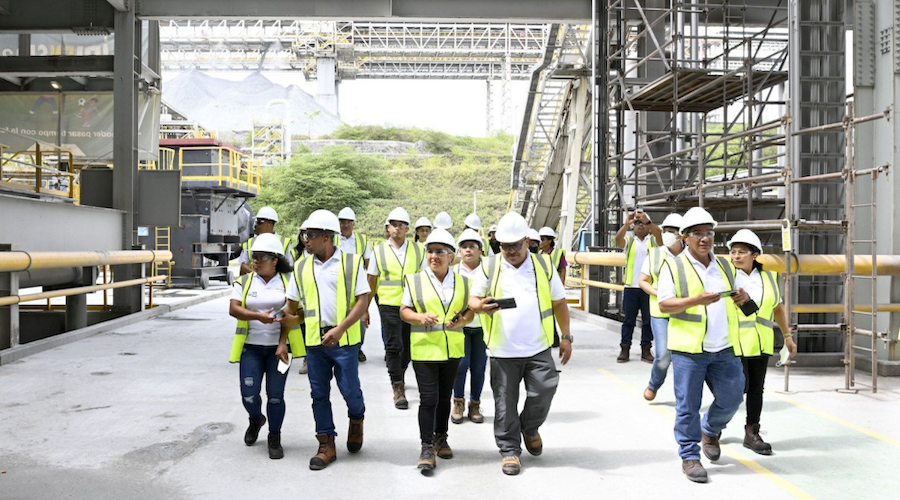Home: Cobalt, Congo and a mass artisanal mining experiment

(The opinions expressed here are those of the author, Andy Home, a columnist for Reuters.)
Cobalt epitomises the minerals conundrum at the heart of the green technology revolution.
It’s a key ingredient in the chemistry that powers electric vehicles and, along with other battery materials such as lithium, is facing a sustained demand surge as the world decarbonises.
But the world’s largest cobalt supplier is Democratic Republic of Congo, where up to a fifth of production is generated by artisanal miners working in squalid and dangerous conditions with little if any pricing power for their hard-won ore.
Automakers such as Tesla and Volkswagen make no secret of their desire to reduce their usage of a metal with such a tainted supply chain. But it will take time and in the interim cobalt demand is forecast by trade house Trafigura to double between now and 2030.
To resolve cobalt’s conflicted dynamics, Congo is embarking on what will be the world’s largest mass experiment to try to formalise the artisanal and small-scale mining sector (ASM).
If it succeeds, it could be a game changer for the cobalt market. It could be an even bigger game changer for the millions working globally in artisanal mines.
Taking back control
There are about 150,000-200,000 artisanal miners currently working cobalt deposits in Congo with more than a million others directly economically dependent on their activity.
The new state-backed Entreprise Generale du Cobalt (EGC) will assume total control of the artisanal cobalt sector with monopoly rights to buy all production.
The world’s largest cobalt supplier is the DRC, where up to a fifth of production is generated by artisanal miners working in squalid and dangerous conditions
“From now on all Congolese artisanal cobalt will be bought by EGC, processed by EGC, and marketed by EGC,” said Albert Yuma, chairman of EGC and state miner Gecamines.
EGC, together with PACT, a non-government organisation active in artisanal mining around the world, will ensure responsible mining standards with marketing partner Trafigura providing support on traceability down the supply chain.
No one is in any doubt as to the scale of the challenge given the Congolese state’s limited enforcement reach.
However, the principle has been piloted at the Mutoshi mine, where up to 5,000 artisanal miners were integrated into a formal structure under the watchful eye of PACT and Trafigura.
Prior to its closure last year due to covid-19 restrictions, Mutoshi generated “a marked positive impact on the local economy, including the creation of new businesses in response to higher demand for goods and services”, according to Trafigura.
That pilot is now going to be massively expanded over the coming months as artisanal cooperatives are brought under official supervision.
Many have shied away from state initiatives in the past, complaining about higher taxes, the added administrative burden and the poor quality of officially sanctioned deposits.
This time state planners will direct artisanal miners towards higher-prospect properties, while EGC will develop a price-sharing formula between itself, the government and the miners.
“We are sure that artisanal miners will receive better remuneration” and “no longer sell their product at the discretion of buyers”, said Jean Dominique Takis Kumbo, chief executive of the new entity.
The world needs Congo, including its artisanal miners
There are self-evident benefits to signing up to the scheme in terms of avoiding the frequent fatal accidents and marauding militias that plague some artisanal mines.
The gamble is that cooperatives will be enticed into the new scheme rather than having to be coerced.
But there is no doubting the government’s commitment, as Yuma put it, “to reclaim an entire section of the economy for the benefits of its artisanal miners, local communities and the whole country”.
Pricing power
The government has every incentive to do so, estimating that the artisanal cobalt sector last year produced about 18,000 tonnes with a notional value of $800 million at current prices. The government’s tax take was zero.
The artisanal sector has had an even greater hidden detrimental impact on state finances.
The bull market of 2017 and 2018 generated a huge artisanal supply surge as cooperatives rushed to join the cobalt boom.
They produced so much that they swamped the global market and the price collapsed over the following three years. It has only just started picking up again as the electric vehicle revolution gains momentum.
The impact of that price drop on the world’s largest official cobalt supplier “was probably in the billions of dollars” in 2019, according to Yuma.
In other words, Congo’s unofficial sector completely undermined the official sector that year.
The formalisation of artisanal cobalt cooperatives should allow for more production discipline. EGC expects to hold output steady as it concentrates on the integration of up to 200,000 potentially wary miners.
Trading power
EGC’s international ambition is to position Congo “as the main cobalt trading country in the world and not just as a producer”.
Yearly artisanal output has ranged from 15,000 to 30,000 tonnes depending on price in recent years, which makes the mining cooperatives the world’s second largest producer after Congo’s official cobalt sector.
That’s a lot of potential trading power in a cobalt-hungry marketplace.
Moreover, despite a mini cobalt rush in other countries, Congo is going to remain a critical supplier for the foreseeable future. Trafigura expects the country will account for about 70% of all new cobalt supply over the coming years.
In short, the world needs Congo, including its artisanal miners.
The EGC is a bold move to try to ensure the country can deliver in a way that gives end-users such as car companies confidence the cobalt they’re buying is not tainted by human rights abuses.
A management template?
The cobalt market, because of its centrality to electric vehicles and consumer goods, has been forced to confront full-on the many problems of artisanal mining.
The entire supply chain from producer to electronics manufacturer seems to be coming around to the view that, to quote Trafigura’s head of corporate responsibility James Nicholson, “the proper response to ASM is not to hide from it or to seek to exclude it but to manage it responsibly”.
If Congo’s mass experiment in bringing artisanal miners under official supervision works, it could be a template for other metals within the country and for other countries.
Because the toll of not confronting the inequities of ASM is rising all the time.
The latest grim addition was the death last weekend of 15 people, including two females, after a landslide at an informal gold mine in northeastern Guinea.
The only unusual feature of the story was that it made it into the news at all. Most artisanal fatalities remain hidden in the shadows.
(Editing by David Clarke)
More News
{{ commodity.name }}
{{ post.title }}
{{ post.date }}




2 Comments
Alfred Dodoo
Great idea, other African countries where mining is done should replicate this fundamental methods
BOB HALL
As with most government initiatives there will be more people living off the labors of an individual. Hard to see how the miners will be enthusiastic about this. Probably the alternatives are worse.